Сб с 10 до 16
ISGOTT. International Safety Guide for Oil Tankers and Terminals/Международное руководство по безопасности для нефтяных танкеров и терминалов
Издание 2006 года на английском языке
Witherby's International Safety Guide for Oil Tankers and Terminals (ISGOTT) 5th Ed. Introduction to Fifth Edition Safety is critical to the tanker industry. The International Safety Guide for Oil Tankers and Terminals, or ISGOTT as it is now widely known, has become the standard reference work on the safe operation of oil tankers and the terminals they serve. To remain so, the Guide must keep abreast of changes in vessel design and operating practice and reflect the latest technology and legislation. In this Fifth Edition, account has been taken of latest thinking on a number of issues including the generation of static electricity and stray currents; the use of mobile phones and pagers which are now ever present but which did not warrant a mention in the Fourth Edition; the use of new materials for mooring lines as emergency towing off pennants; the toxicity and the toxic effects of benzene and hydrogen sulphide; and the introduction of the International Safety Management (ISM) Code. The Ship/Shore Safety Check List has been completely revised to better reflect the individual and joint responsibilities of the tanker and the terminal. The Guide is now divided into four sections: General Information; Tanker Information; Terminal Information and the Management of the Tanker and Terminal Interface. Care has been taken to ensure that where the guidance given in previous editions was still relevant and fit-for purpose it has not been changed or deleted in moving to the new format. We believe that ISGOTT continues to provide the best technical guidance on tanker and terminal operations.
Contents
Foreword
Introduction to the fifth edition
Purpose and scope
Bibliography
Definitions
Part 1: General information
Chapter 1 Basic properties of petroleum
1.1 Vapour Pressure
1.2 Flammability
1.3 Density of Hydrocarbon Gases
Chapter 2 Hazards of petroleum
2.1 Flammability
2.2 Density
2.3 Toxicity
2.4 Gas Measurement
2.5 Hydrocarbon Gas Evolution and Dispersion
2.6 Pyrophoric Iron Sulphide
2.7 The Hazards Associated with the Handling, Storage and Carriage of Residual Fuel Oils
Chapter 3 Static electricity
3.1 Principles of Electrostatics
3.2 General Precautions Against Electrostatic Hazards
3.3 Other Sources of Electrostatic Hazards
Chapter 4 General hazards for ship and terminal
4.1 General Principles
4.2 Control of Potential Ignition Sources
4.3 Portable Electrical Equipment
4.4 Management of Electrical Equipment and Installations in Dangerous Areas
4.5 Use of Tools
4.6 Equipment Made of Aluminium
4.7 Cathodic Protection Anodes in Cargo Tanks
4.8 Communications Equipment
4.9 Spontaneous Combustion
4.10 Auto-Ignition
4.11 Asbestos
Chapter 5 Fire-fighting
5.1 Theory of Fire-Fighting
5.2 Types of Fire and Appropriate Extinguishing Agents
5.3 Extinguishing Agents
Chapter 6 Security
6.1 General
6.2 Security Assessments
6.3 Responsibilities Under the ISPS Code
6.4 Security Plans
Part 2: Tanker information
Chapter 7 Shipboard systems
7.1 Fixed Inert Gas Systems
7.2 Venting Systems
7.3 Cargo and Ballast Systems
7.4 Power and Propulsion Systems
7.5 Vapour Emission Control (VEC) Systems
7.6 Stern Loading and Discharging Arrangements
Chapter 8 Ship's equipment
8.1 Shipboard Fire-Fighting Equipment
8.2 Gas Testing Equipment
8.3 Lifting Equipment
Chapter 9 Management of safety and emergencies
9.1 The International Safety Management (ISM) Code
9.2 Safety Management Systems
9.3 Permit to Work Systems
9.4 Hot Work
9.5 Welding and Burning Equipment
9.6 Other Hazardous Tasks
9.7 Management of Contractors
9.8 Repairs at a Facility Other Than a Shipyard
9.9 Shipboard Emergency Management
Chapter 10 Enclosed spaces
10.1 Definition and General Caution
10.2 Hazards of Enclosed Spaces
10.3 Atmosphere Tests Prior to Entry
10.4 Control of Entry into Enclosed Spaces
10.5 Safeguards for Enclosed Space Entry
10.6 Emergency Procedures
10.7 Entry into Enclosed Spaces with Atmospheres Known or Suspected to be Unsafe for Entry
10.8 Respiratory Protective Equipment
10.9 Work in Enclosed Spaces
10.10 Pumproom Entry Precautions
10.11 Pumproom Operational Precautions
Chapter 11 Shipboard operations
11.1 Cargo Operations
11.2 Stability, Stress, Trim and Sloshing Considerations
11.3 Tank Cleaning
11.4 Gas Freeing
11.5 Crude Oil Washing
11.6 Ballast Operations
11.7 Cargo Leakage into Double Hull Tanks
11.8.1 General
11.9 Transfers Between Vessels
Chapter 12 Carriage and storage of hazardous materials
12.1 Liquefied Gases
12.2 Ship's Stores
12.3 Cargo and Bunker Samples
12.4 Other Materials
12.5 Packaged Cargoes
Chapter 13 Human element considerations
13.1 Manning Levels
13.2 Training and Experience
13.3 Hours of Rest
13.4 Drug and Alcohol Policy
13.5 Drug Trafficking
13.6 Employment Practices
Chapter 14 Special ship types
14.1 Combination Carriers
14.2 LPG Carriers Carrying Petroleum Products
Part 3: terminal information
Chapter 15 Terminal management and organisation
15.1 Compliance
15.2 Hazard Identification and Risk Management
15.3 Operating Manual
15.4 Terminal Information and Port Regulations
15.5 Supervision and Control
15.6 Ship and Berth Compatibility
15.7 Documentation
Chapter 16 Terminal operations
16.1 Pre-Arrival Communications
16.2 Mooring
16.3 Limiting Conditions for Operations
16.4 Ship/Shore Access
16.5 Double Banking
16.6 Over the Tide Cargo Operations
16.7 Operations Where the Ship is not Always Afloat
16.8 Generation of Pressure Surges in Pipelines
16.9 Assessment of Pressure Surges
16.10 Reduction of Pressure Surge Hazard
16.11 Pipeline Flow Control as a Static Precaution
Chapter 17 Terminal systems and equipment
17.1 Electrical Equipment
17.2 Fendering
17.3 Lifting Equipment
17.4 Lighting
17.5 Ship/Shore Electrical Isolation
17.6 Earthing and Bonding Practice in the Terminal
Chapter 18 Cargo transfer equipment
18.1 Metal Cargo Arms
18.2 Cargo Hoses
18.3 Vapour Emission Control Systems
Chapter 19 safety and fire protection
19.1 Safety
19.2 Marine Terminal Fire Protection
19.3 Alarm and Signalling Systems
19.4 Detection and Alarm Systems at Terminals Handling Crude Oil and Petroleum Products
19.5 Fire-Fighting Equipment
19.6 Water-Borne Fire-Fighting Equipment
19.7 Protective Clothing
19.8 Access for Fire-Fighting Services
Chapter 20 Emergency preparedness
20.1 Overview
20.2 Terminal Emergency Planning - Plan Components and Procedures
20.3 Definition and Hierarchy of Emergencies
20.4 Emergency Response Plan
20.5 Emergency Removal of Tanker from Berth
Chapter 21 Emergency evacuation
21.1 General
21.2 Evacuation and Personnel Escape Routes
21.3 Surcival Craft
21.4 Training and Drills
Part 4: Management of the tanker and Terminal interface
Chapter 22 Communications
22.1 Procedures and Precautions
22.2 Pre-Arrival Exchange of Information
22.3 Pre-Berthing Exchange of Information
22.4 Pre-Transfer Exchange of Information
22.5 Agreed Loading Plan
22.6 Agreed Discharge Plan
22.7 Agreement to Carry Out Repairs
Chapter 23 Mooring
23.1 Personnel Safety
23.2 Security of Moorings
23.3 Preparations for Arrival
23.4 Mooring at Jetty Berths
23.5 Berthing at Buoy Moorings
Chapter 24 Precautions on ship and terminal during Cargo handling
24.1 External Openings in Superstructures
24.2 Central Air Conditioning and Ventilation Systems
24.3 Openings in Cargo Tanks
24.4 Inspection of Ship's Cargo Tanks Before Loading
24.5 Segregated Ballast Tank Lids
24.6 Ship and Shore Cargo Connections
24.7 Accidental Oil Spillage and Leakage
24.8 Fire-Fighting Equipment
24.9 Proximity to Other Vessels
24.10 Notices
24.11 Manning Requirements
24.12 Control of Naked Flames and Other Potential Ignition Sources
24.13 Control of Vehicles and Other Equipment
24.14 Helicopter Operations
Chapter 25 Bunkering operations
25.1 General
25.2 Bunkering Procedures
25.3 The Bunkering Operation
25.4 The Bunkering Safety Check-List
Chapter 26 Safety management
26.1 Climatic Conditions
26.2 Personnel Safety
26.3 The Ship/Shore Safety Check-List
26.4 Guidelines for Completing the Ship/Shore Safety Check-List
26.5 Emergency Actions
Index
Двуязычное издание 2007 года (англо-русское)
Одна из главных функций международных ассоциаций, которые подготовили новое издание International Safety Guide for Oil Tankers and Terminals (ISGOTT), заключается в том, чтобы представить интересы танкерной отрасли в регулирующих органах, таких как Международная морская организация (ИМО). Международная палата судоходства (1CS), Международный морской форум нефтяных компаний (OCIMF) и Международная ассоциация портов и гаваней (1АРН) вносят свой значительный вклад в работу ИМО путем активного участия в заседаниях ИМО.
ИМО поддерживает общие усилия перечисленных выше организаций в деле развития и одобрения международной нормативной базы, в рамках которой осуществляется эксплуатация судов, и, при необходимости, привлекает эти организации для последующего пересмотра и обновления уже имеющейся нормативной базы. За годы, с тех пор как ИМО приняла Конвенции СОЛАС-74 и МАРПОЛ 73/78, в танкерной отрасли значительно улучшилось положение дел в области безопасности, учета охраны объектов, а также в области защиты окружающей среды. Однако таких достижений невозможно достичь только с помощью правил; наличие достижений свидетельствует о внедрении хорошей практики выполнения работ, которая принята и постоянно совершенствуется в танкерной отрасли, и которая направлена на обеспечение безопасности и экологической защиты задействованного персонала. Такой подход ведет к постоянному совершенствованию, концепция которого заложена ИМО в Международном кодексе по управлению безопасностью (МКУБ) и демонстрируется усилиями танкерной отрасли в поддержании на современном уровне Международного руководства по безопасности для нефтяных танкеров и терминалов или ISGOTT, как его везде называют специалисты.
Вот почему мне доставляет большое удовольствие представить пересмотренное издание этого Международного руководства. За многие годы ИМО признала ISGOTT как одно из основных справочных руководств по безопасной эксплуатации нефтяных танкеров и терминалов, которые обслуживают танкеры, и это оговорено во многих правилах и рекомендациях ИМО.
Основой настоящего пятого издания ISGOTT (только на анг. языке), по-прежнему, является наиболее известная безопасная практика эксплуатации нефтяных танкеров и терминалов, но в это издание теперь также заложена философия управления, базирующаяся на оценке риска. Способствуя пониманию риска, ISGOTT позволит более полно учитывать конкретные обстоятельства, исключить определенные сомнения относительно некоторых судовых операций не только путем их выполнения в соответствии с правилами, но также путем поощрения моряков и их работодателей идентифицировать риски в своей деятельности, и после этого предпринимать адекватные меры по их нейтрализации. Такой подход позволяет концентрировать внимание персонала и, поэтому, полностью совместим с положениями МКУБ и стратегией ИМО относительно роли человеческого фактора.
Я уверен, что новое издание ISGOTT позволит не только достичь блестящих результатов в обеспечении безопасности в танкерной отрасли, но и свести к нулю количество инцидентов, к чему мы все и стремимся. Поэтому я рекомендую всем заинтересованным сторонам руководствоваться ISGOTT.
Содержание
Предисловие
Введение к пятому изданию
Цель и сфера действия
Библиография
Определения
Часть 1. Общая информация
Глава 1. Основные характеристики нефтепродуктов
1.1. Давление паров
1.2. Воспламеняемость
1.3. Плотность углеводородных газов
Глава 2. Опасные свойства нефтепродуктов
2.1. Воспламеняемость
2.2. Плотность
2.3. Токсичность
2.4. Измерение концентраций газа
2.5. Выделение и рассеивание углеводородного газа
2.6. Пирофорный сульфид железа
2.7. Опасности, связанные с перегрузкой, хранением и перевозкой мазутов
Глава 3. Статическое электричество
3.1. Основы электростатики
3.2. Общие меры предосторожности по предотвращению опасностей статического электричества
3.3. Другие источники опасностей статического электричества
Глава 4 общие опасности для судна и терминала
4.1. Общие принципы
4.2. Контроль потенциальных источников воспламенения
4.3. Переносное электрооборудование
4.4. Управление электрическим оборудованием и установками в опасных зонах
4.5. Использование станков и инструментов
4.6. Оборудование, изготовленное из алюминия
4.7. Аноды катодной защиты в грузовых танках
4.8. Оборудование средств связи
4.9. Самопроизвольное возгорание
4.10. Самовоспламенение
4.11. Асбест
Глава 5. Борьба с пожаром
5.1. Теория пожаротушения
5.2. Типы пожаров и соответствующие огнегасящие средства
5.3. Огнегасящие вещества
Глава 6. Охрана
6.1. Общие положения
6.2. Оценка охраны
6.3. Ответственность согласно Кодексу ОСПС
6.4. Планы охраны
Часть 2: информация о танкере
Глава 7. Судовые системы
7.1. Стационарные системы инертного газа
7.2. Газоотводные системы
7.3. Грузовая и балластная системы
7.4. Энергетические и движительные установки
7.5. Системы регулируемого выпуска паров (РВП)
7.6. Кормовые устройства для погрузки и выгрузки
Глава 8. Судовое оборудование
8.1. Судовое противопожарное оборудование
8.2. Оборудование для контроля газовой среды
8.3. Подъемное оборудование
Глава 9. Управление безопасностью и действиями при аварии
9.1. Международный кодекс по управлению безопасностью (МКУБ)
9.2. Системы управления безопасностью
9.3. Системы выдачи разрешений на производство работ
9.4. Горячие работы
9.5. Оборудование для сварки и резки
9.6. Другие опасные задания
9.7. Управление подрядчиками
9.8. Ремонт танкера на предприятии, ином, чем судостроительная верфь
9.9.Управление действиями при аварии на судне
Глава 10. Закрытые помещения
10.1. Определение и общие меры предосторожности
10.2. Опасности закрытых помещений
10.3. Определение состава атмосферы до входа
10.4. Регламент входа в закрытые помещения
10.5. Меры безопасности при входе в закрытое помещение
10.6. Аварийные мероприятия
10.7. Вход в закрытые помещения с заведомо опасной или потенциально опасной атмосферой
10.8. Средства защиты органов дыхания
10.9. Работа в закрытых помещениях
10.10. Меры предосторожности при входе в насосное отделение
10.11. Эксплуатационные меры предосторожности в насосном отделении
Глава 11. Судовые операции
11.1. Грузовые операции
11.2. Рассмотрение факторов, влияющих на остойчивость, напряжение, дифферент и образование всплесков
11.3. Очистка танка
11.4. Общие положения
11.5. Мойка сырой нефтью
11.6. Балластные операции
11.7. Утечка груза в межкорпусные танки
11.8. Выполнение измерений характеристик груза и высоты незаполненного грузом объема, погружение предметов и отбор проб
11.9. Перекачки между судами
Глава 12. Перевозка и хранение опасных материалов
12.1. Сжиженные газы
12.2. Судовые запасы
12.3. Образцы груза и топлива
12.4. Прочие материалы
12.5. Грузы в упаковке
Глава 13. Влияние человеческого фактора
13.1. Штатная численность экипажа
13.2. Подготовка и опыт
13.3. Время отдыха
13.4. Политика в отношении наркотиков и алкоголя
13.5. Контрабанда наркотиков
13.6. Практика найма
Глава 14. Специализированные типы судов
14.1. Комбинированные суда
14.2. Суда, предназначенные для перевозки СНГ, но перевозящие нефтепродукты
Часть 3. Информация о терминале
Глава 15. Управление терминалом и организация его деятельности
15.1. Соответствие
15.2. Выявление опасностей и управление рисками
15.3. Руководство по эксплуатации
15.4. Информация, предоставляемая терминалом, и правила, действующие в порту
15.5. Наблюдение и контроль
15.6. Совместимость судна и причала
15.7. Документация
Глава 16. Эксплуатация терминала
16.1. Связь с танкером до прибытия в порт
16.2. Швартовка
16.3. Швартовное оборудование
16.4. Эксплуатационные ограничения
16.5. Стоянка в два корпуса
16.6. Грузовые операции во время приливов/отливов
16.7. Выполнение операций, когда судно не всегда находится на плаву
16.8. Возникновение гидравлического удара в трубопроводах
16.9. Оценка гидравлических ударов
16.10. Снижение опасности гидравлического удара
16.11. Регулирование интенсивности потока в трубопроводе - мера предосторожности против статического электричества
Глава 17. Системы и оборудование терминала
17.1. Электрооборудование
17.2. Кранцевая защита
17.3. Подъемное оборудование
17.4. Освещение
17.5. Электрическая изоляция судна от берега
17.6. Заземление и электрическое подсоединение на терминале
Глава 18. Грузовое перегрузочное оборудование
18.1. Металлические грузовые стендеры
18.2. Грузовые шланги
18.3. Системы регулируемого выпуска паров
Глава 19. Безопасность и противопожарная защита
19.1. Безопасность
19.2. Противопожарная защита морского терминала
19.3. Системы аварийно-предупредительной сигнализации и связи
19.4. Системы обнаружения и аварийно-предупредительной сигнализации на терминалах для перегрузки сырой нефти и нефтепродуктов
19.5. Противопожарное оборудование
19.6. Противопожарное оборудование на плаву
19.7. Защитная одежда
19.8. Доступ для пожарных служб
Глава 20. Готовность к реагированию на аварию
20.1. Общий обзор
20.2. Планирование аварийных мероприятий – компоненты плана и порядок реализации
20.3. Аварии: определение и классификация
20.4. Аварийный план терминала
20.5. Аварийный отвод танкера от причала
Глава 21. Аварийная эвакуация
21.1. Общие положения
21.2. Эвакуация и пути эвакуации персонала
21.3. Спасательные капсулы
21.4. Подготовка персонала и учения
Часть 4. Управление взаимодействием танкера и терминала
Глава 22. Обмен сообщениями
22.1. Регламенты и меры предосторожности
22.2. Обмен информацией до прибытия на терминал
22.3. Обмен информацией до постановки к причалу
22.4. Обмен информацией до начала перекачки
22.5. Согласованный план погрузки
22.6. Согласованный план выгрузки
22.7. Согласование производства ремонтных работ
Глава 23. Швартовка
23.1. Безопасность персонала
23.2. Надежность швартовов
23.3. Подготовка к прибытию
23.4. Швартовка к причалам "джетти"
23.5. Причаливание к швартовным буям 399
Глава 24. Меры предосторожности на судне и терминале при перегрузке груза
24.1. Наружные отверстия в помещениях надстройки
24.2. Центральные системы вентиляции и кондиционирования воздуха
24.3. Отверстия в грузовых танках
24.4. Проверка судовых грузовых танков перед погрузкой
24.5. Крышки танков изолированного балласта
24.6. Грузовые соединения между судном и берегом
24.7. Случайные разливы и утечки нефти
24.8. Противопожарное оборудование
24.9. Близость к другим судам
24.10. Предупреждающие надписи
24.11. Требования к укомплектованности команды
24.12. Надзор за источниками открытого огня и другими потенциальными источниками воспламенения
24.13. Контроль за транспортными средствами и другим оборудованием
24.14. Обслуживание судна вертолетом
Глава 25. Бункеровка
25.1. Общие положения
25.2. Регламент бункеровки
25.3. Прием топлива
25.4. Лист контроля безопасности при бункеровке
Глава 26. Управление безопасностью
26.1. Климатические условия
26.2. Обеспечение безопасности персонала
26.3. Лист контроля безопасности на судне и берегу
26.4. Наставления по заполнению Листа контроля безопасности на судне и берегу
26.5. Действия в случае аварии
Издание 2020 года на английском языке
The revised Sixth Edition of the International Safety Guide for Oil Tankers and Terminals, or ISGOTT as it is generally known throughout the global tanker industry and amongst the Member States of the UN International Maritime Organization (IMO).
ISGOTT, first published in 1978, is now widely recognised as the definitive best practice guidance on tanker safety and pollution prevention, and is a perfect example of the good cooperation that exists between the IMO and the shipping industry the Organization regulates. The authors of this major publication - the International Chamber of Shipping (ICS), the Oil Companies International Marine Forum (OCIMF) and the International Association of Ports and Harbors (IAPH) - all enjoy consultative status with the IMO and contribute significantly to its work through their active participation at IMO meetings.
I believe that a reason why ISGOTT has endured, and is so highly regarded, is the vital complementary role it plays in working alongside the comprehensive framework of global shipping regulation that has been adopted by the IMO to help ensure safe and pollution-free ship operations.
Global maritime regulations, enforced by Flag States, are vital for ensuring that all ships, regardless of flag, can operate safely and efficiently wherever in the world they are trading. However, further detailed guidance on best operational practice is leveraged from the vast experience of industry professionals. Industry publications such as ISGOTT are therefore crucial for ensuring that the aims and objectives of IMO instruments, such as the MARPOL and SOLAS Conventions, are achieved in real life.
The safety record and the environmental performance of the tanker industry has improved substantially since the adoption by the IMO of its many Conventions and Codes. This impressive improvement in performance has not been delivered by regulation alone. It is a testimony to the good practices deployed, and constantly refined, by the industry itself and the dedication and huge professionalism of the seafarers and other personnel it employs.
This firm commitment by the industry to continuous improvement is a concept fully embraced by the IMO's ISM Code, and I believe this is clearly demonstrated by the industry's ongoing efforts to keep ISGOTT updated.
I fully support the industry-wide collaboration that has made this new edition of ISGOTT possible. This is crucial to ensuring that the maritime industry will not only contribute to maintaining and further improving its excellent safety record and reducing its environmental impact, but will also bring us ever closer to the ultimate goal of zero accidents.
Contents
Foreword
Introduction to the sixth edition
Purpose and scope
Bibliography
Definitions
Part 1: General information
Chapter 1 Basic properties of petroleum
1.1 Vapour Pressure
1.2 Flammability
1.3 Density of Hydrocarbon Gases
Chapter 2 Hazards of petroleum
2.1 Flammability
2.2 Density
2.3 Toxicity
2.4 Gas Measurement
2.5 Hydrocarbon Gas Evolution and Dispersion
2.6 Pyrophoric Iron Sulphide
2.7 The Hazards Associated with the Handling, Storage and Carriage of Residual Fuel Oils
Chapter 3 Static electricity
3.1 Principles of Electrostatics
3.2 General Precautions Against Electrostatic Hazards
3.3 Other Sources of Electrostatic Hazards
Chapter 4 General hazards for ship and terminal
4.1 General Principles
4.2 Control of Potential Ignition Sources
4.3 Portable Electrical Equipment
4.4 Management of Electrical Equipment and Installations in Dangerous Areas
4.5 Use of Tools
4.6 Equipment Made of Aluminium
4.7 Cathodic Protection Anodes in Cargo Tanks
4.8 Communications Equipment
4.9 Spontaneous Combustion
4.10 Auto-Ignition
4.11 Asbestos
Chapter 5 Fire-fighting
5.1 Theory of Fire-Fighting
5.2 Types of Fire and Appropriate Extinguishing Agents
5.3 Extinguishing Agents
Chapter 6 Security
6.1 General
6.2 Security Assessments
6.3 Responsibilities Under the ISPS Code
6.4 Security Plans
Part 2: Tanker information
Chapter 7 Shipboard systems
7.1 Fixed Inert Gas Systems
7.2 Venting Systems
7.3 Cargo and Ballast Systems
7.4 Power and Propulsion Systems
7.5 Vapour Emission Control (VEC) Systems
7.6 Stern Loading and Discharging Arrangements
Chapter 8 Ship's equipment
8.1 Shipboard Fire-Fighting Equipment
8.2 Gas Testing Equipment
8.3 Lifting Equipment
Chapter 9 Management of safety and emergencies
9.1 The International Safety Management (ISM) Code
9.2 Safety Management Systems
9.3 Permit to Work Systems
9.4 Hot Work
9.5 Welding and Burning Equipment
9.6 Other Hazardous Tasks
9.7 Management of Contractors
9.8 Repairs at a Facility Other Than a Shipyard
9.9 Shipboard Emergency Management
Chapter 10 Enclosed spaces
10.1 Definition and General Caution
10.2 Hazards of Enclosed Spaces
10.3 Atmosphere Tests Prior to Entry
10.4 Control of Entry into Enclosed Spaces
10.5 Safeguards for Enclosed Space Entry
10.6 Emergency Procedures
10.7 Entry into Enclosed Spaces with Atmospheres Known or Suspected to be Unsafe for Entry
10.8 Respiratory Protective Equipment
10.9 Work in Enclosed Spaces
10.10 Pumproom Entry Precautions
10.11 Pumproom Operational Precautions
Chapter 11 Shipboard operations
11.1 Cargo Operations
11.2 Stability, Stress, Trim and Sloshing Considerations
11.3 Tank Cleaning
11.4 Gas Freeing
11.5 Crude Oil Washing
11.6 Ballast Operations
11.7 Cargo Leakage into Double Hull Tanks
11.8.1 General
11.9 Transfers Between Vessels
Chapter 12 Carriage and storage of hazardous materials
12.1 Liquefied Gases
12.2 Ship's Stores
12.3 Cargo and Bunker Samples
12.4 Other Materials
12.5 Packaged Cargoes
Chapter 13 Human element considerations
13.1 Manning Levels
13.2 Training and Experience
13.3 Hours of Rest
13.4 Drug and Alcohol Policy
13.5 Drug Trafficking
13.6 Employment Practices
Chapter 14 Special ship types
14.1 Combination Carriers
14.2 LPG Carriers Carrying Petroleum Products
Part 3: terminal information
Chapter 15 Terminal management and organisation
15.1 Compliance
15.2 Hazard Identification and Risk Management
15.3 Operating Manual
15.4 Terminal Information and Port Regulations
15.5 Supervision and Control
15.6 Ship and Berth Compatibility
15.7 Documentation
Chapter 16 Terminal operations
16.1 Pre-Arrival Communications
16.2 Mooring
16.3 Limiting Conditions for Operations
16.4 Ship/Shore Access
16.5 Double Banking
16.6 Over the Tide Cargo Operations
16.7 Operations Where the Ship is not Always Afloat
16.8 Generation of Pressure Surges in Pipelines
16.9 Assessment of Pressure Surges
16.10 Reduction of Pressure Surge Hazard
16.11 Pipeline Flow Control as a Static Precaution
Chapter 17 Terminal systems and equipment
17.1 Electrical Equipment
17.2 Fendering
17.3 Lifting Equipment
17.4 Lighting
17.5 Ship/Shore Electrical Isolation
17.6 Earthing and Bonding Practice in the Terminal
Chapter 18 Cargo transfer equipment
18.1 Metal Cargo Arms
18.2 Cargo Hoses
18.3 Vapour Emission Control Systems
Chapter 19 safety and fire protection
19.1 Safety
19.2 Marine Terminal Fire Protection
19.3 Alarm and Signalling Systems
19.4 Detection and Alarm Systems at Terminals Handling Crude Oil and Petroleum Products
19.5 Fire-Fighting Equipment
19.6 Water-Borne Fire-Fighting Equipment
19.7 Protective Clothing
19.8 Access for Fire-Fighting Services
Chapter 20 Emergency preparedness
20.1 Overview
20.2 Terminal Emergency Planning - Plan Components and Procedures
20.3 Definition and Hierarchy of Emergencies
20.4 Emergency Response Plan
20.5 Emergency Removal of Tanker from Berth
Chapter 21 Emergency evacuation
21.1 General
21.2 Evacuation and Personnel Escape Routes
21.3 Surcival Craft
21.4 Training and Drills
Part 4: Management of the tanker and Terminal interface
Chapter 22 Communications
22.1 Procedures and Precautions
22.2 Pre-Arrival Exchange of Information
22.3 Pre-Berthing Exchange of Information
22.4 Pre-Transfer Exchange of Information
22.5 Agreed Loading Plan
22.6 Agreed Discharge Plan
22.7 Agreement to Carry Out Repairs
Chapter 23 Mooring
23.1 Personnel Safety
23.2 Security of Moorings
23.3 Preparations for Arrival
23.4 Mooring at Jetty Berths
23.5 Berthing at Buoy Moorings
Chapter 24 Precautions on ship and terminal during Cargo handling
24.1 External Openings in Superstructures
24.2 Central Air Conditioning and Ventilation Systems
24.3 Openings in Cargo Tanks
24.4 Inspection of Ship's Cargo Tanks Before Loading
24.5 Segregated Ballast Tank Lids
24.6 Ship and Shore Cargo Connections
24.7 Accidental Oil Spillage and Leakage
24.8 Fire-Fighting Equipment
24.9 Proximity to Other Vessels
24.10 Notices
24.11 Manning Requirements
24.12 Control of Naked Flames and Other Potential Ignition Sources
24.13 Control of Vehicles and Other Equipment
24.14 Helicopter Operations
Chapter 25 Bunkering operations
25.1 General
25.2 Bunkering Procedures
25.3 The Bunkering Operation
25.4 The Bunkering Safety Check-List
Chapter 26 Safety management
26.1 Climatic Conditions
26.2 Personnel Safety
26.3 The Ship/Shore Safety Check-List
26.4 Guidelines for Completing the Ship/Shore Safety Check-List
26.5 Emergency Actions
Index
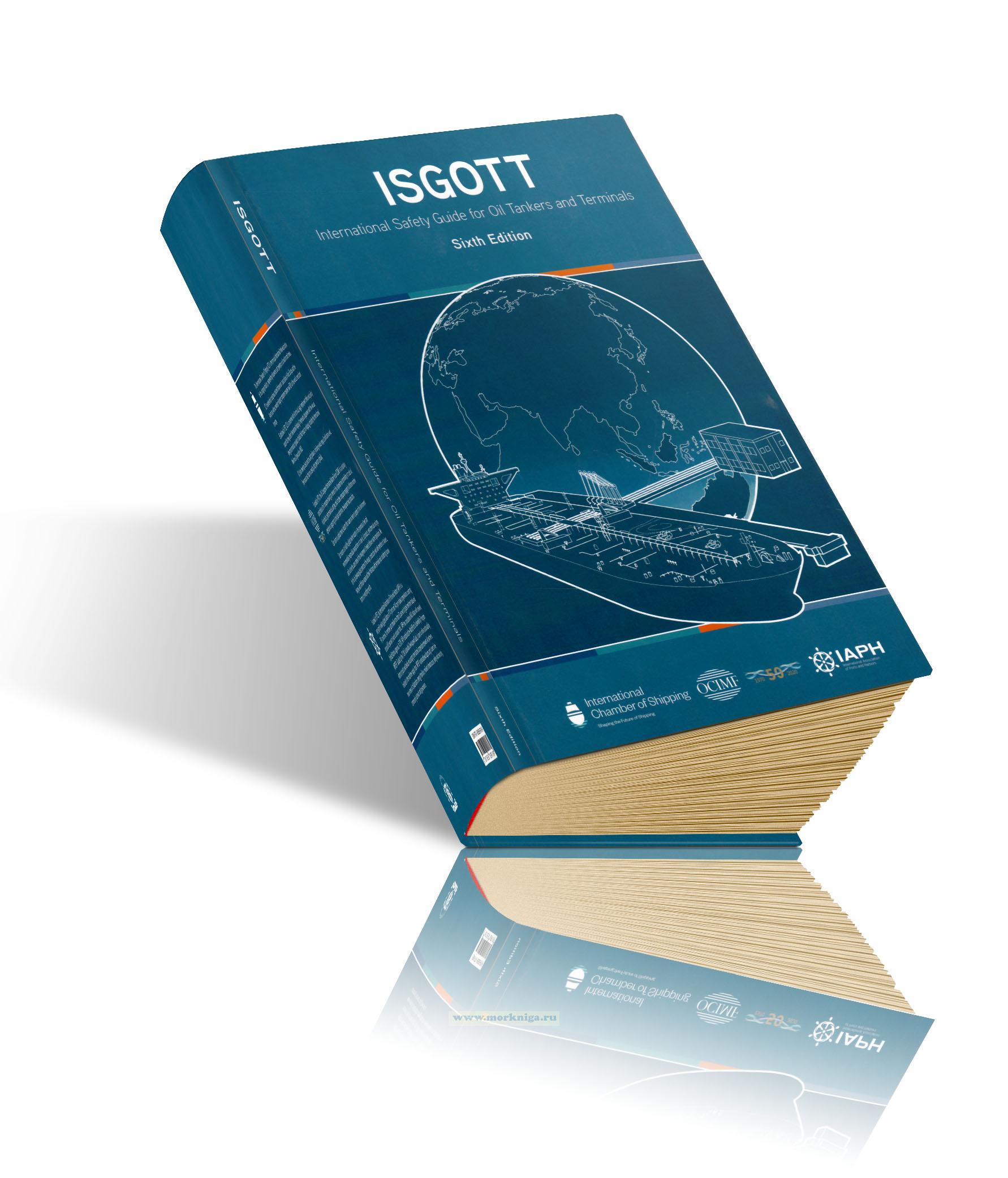
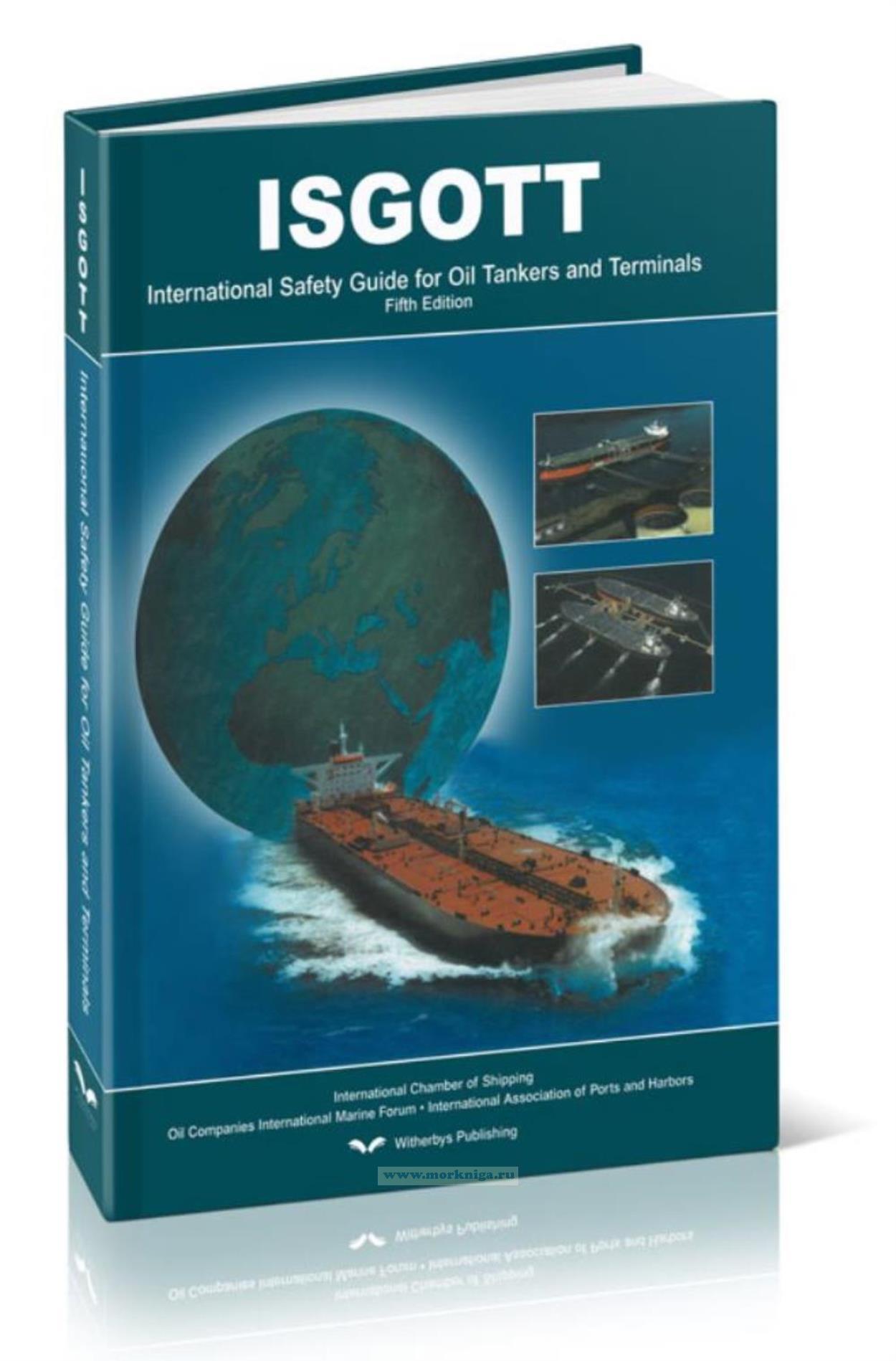
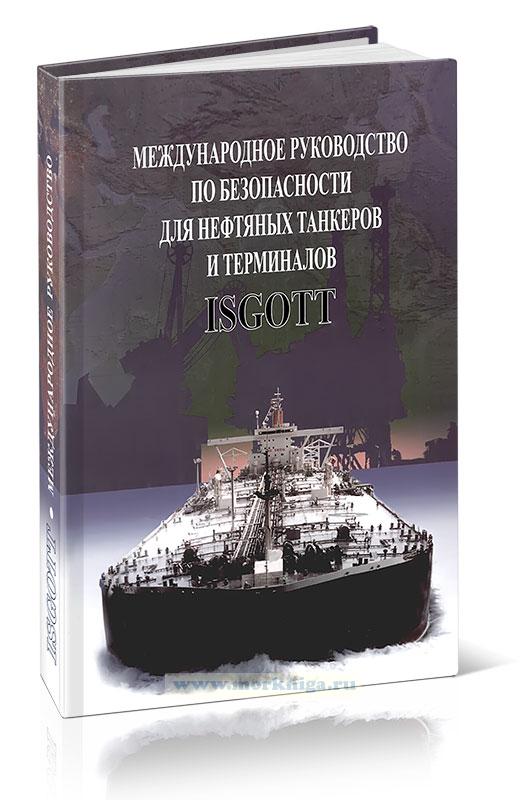
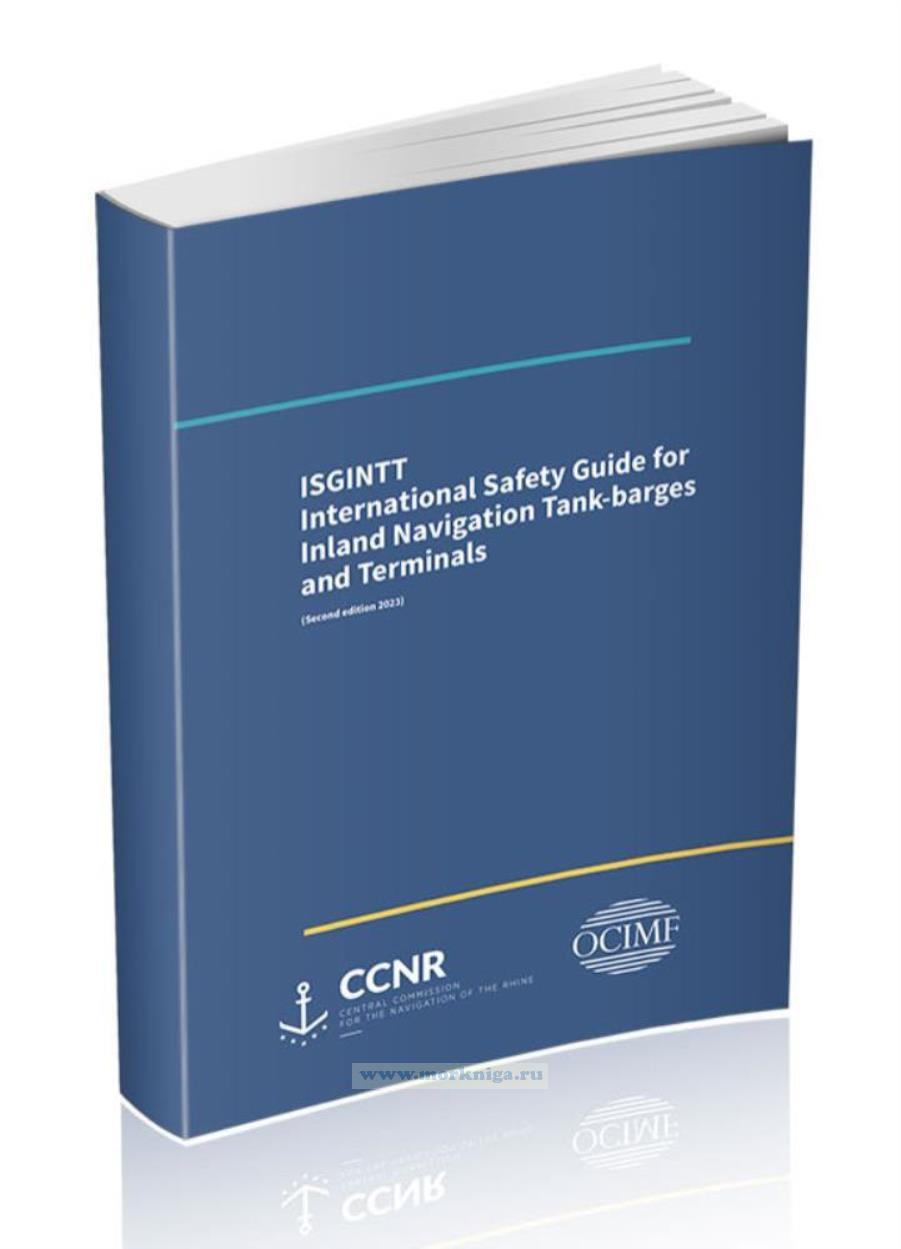 International Safety Guide for Inland Navigation Tank-barges and Terminals (ISGINTT)/Международное руководство по безопасности для танкеров внутреннего плавания и терминало
International Safety Guide for Inland Navigation Tank-barges and Terminals (ISGINTT)/Международное руководство по безопасности для танкеров внутреннего плавания и терминало 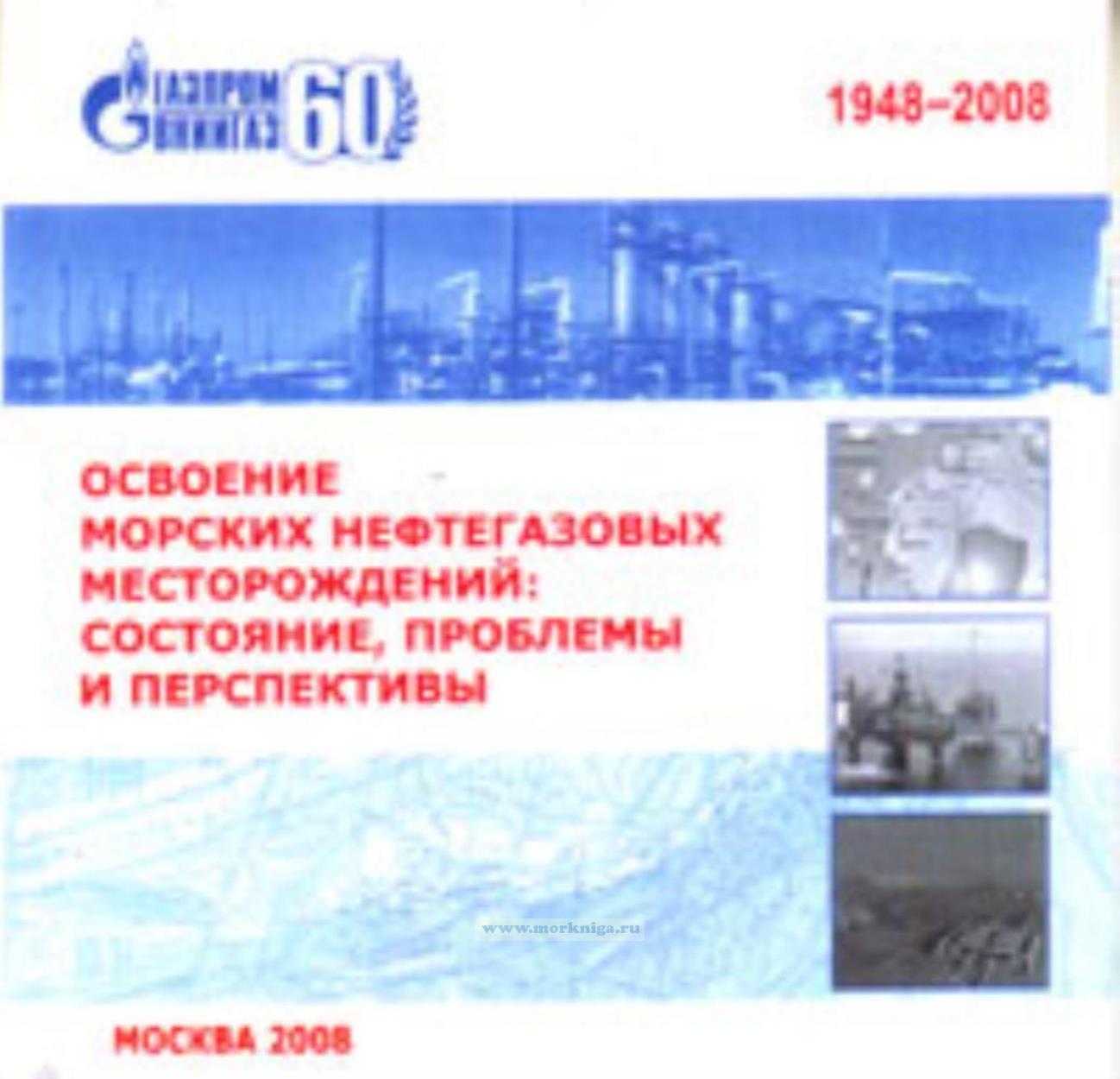 CD Освоение морских нефтегазовых месторождений: состояние, проблемы и перспективы
CD Освоение морских нефтегазовых месторождений: состояние, проблемы и перспективы